next() を使う。
例
my_arr = ['春','夏','秋','冬'] my_iter = iter(my_arr) print(next(my_iter,'なし')) print(next(my_iter,'なし')) print(next(my_iter,'なし')) print(next(my_iter,'なし')) print(next(my_iter,'なし'))
結果
春 夏 秋 冬 なし
雑記
投稿日:2022年7月28日 更新日:
next() を使う。
my_arr = ['春','夏','秋','冬'] my_iter = iter(my_arr) print(next(my_iter,'なし')) print(next(my_iter,'なし')) print(next(my_iter,'なし')) print(next(my_iter,'なし')) print(next(my_iter,'なし'))
春 夏 秋 冬 なし
執筆者:seyanen
関連記事

matplotlib の ax でx軸、y軸の端の値を設定する
axes には、set_xlim として定義する。 例 import numpy as np from matplotlib import pyplot as plt x = np.linspace( …

python の __str__ と __repr__ とは
python でクラスの情報を文字列で表示するとき、__str__ メソッドと __repr__ メソッドが使える。__str__ は、プログラマーとは限らないユーザーに「読める形で情報を表示」するこ …

python3 で、dictionary のキー一覧を取得する方法
dict.keys() でキーを取得することができる。 参考:dictionary の値一覧を取得するときは、dict.values() を使う。 例 print(dict.keys())

python3 でグローバル変数とローカル変数で同じ名前の変数を使う
グローバル変数とローカル変数で同じ名前の変数を使うことができる。 例 x = 10 def myfunc(): x = 20 print(‘関数内: x = ‘+str(x)) myfunc() pr …

2023/01/18
matplotlib のグラフ作成と gnuplot との対応 比較

2022/10/14
pythonで配列(リスト)の、ある要素がわかっているときにその次の要素を取得する方法。